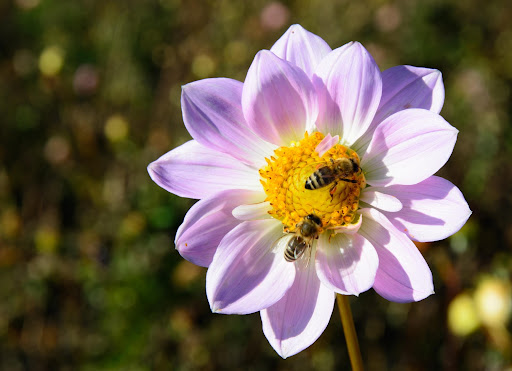Photo credit by Pexels
When you think of winterizing your garden, you probably don’t think about bees. In order to help the honeybees survive, you should make sure your garden can support your local honeybee population during the winter. The following tips can help your garden become a bee-friendly sanctuary.
Why We Need Bees
Honeybees are crucial to food production all over the world, which is why colony collapse is a dangerous issue. More than one-third of all crop production in the U.S. requires pollination. Wilson Bros Gardens recommends you avoid any herbicides, insecticides, pesticides and other chemicals on either your garden or lawn because even small amounts of these chemicals can be fatal for bees.
Interested in learning what pest control is safe for your garden? Mother Earth News says it depends on the pest. For example, diatomaceous earth is fairly effective against slugs, while row covers help protect against aphids.
The Dangers Of Herbicides
Herbicides can be a serious problem for humans as well as bees. Some studies indicate that Roundup, one of the most popular herbicides, might be linked to Parkinson’s, cancer and other health problems. Instead, they recommend using organic weed control methods. These include easy solutions such as mulching and treatments like boiling water, vinegar or corn gluten.
One of your best defenses, though, will be hand-pulling weeds, as long as you make sure to get the root.
Winterizing Your Garden
Meanwhile, you can help sustain local bee populations while also protecting your garden from the elements. The first step is to safely winterize using healthy, sustainable choices.
- Plant cover crops that build up the soil and prevent weeds such as garlic.
- Prep your garden tools by cleaning them to prevent rust. This will also help extend the life of your tools.
- Start a compost pile. Include dried leaves instead of throwing them in the garbage. You want a healthy mixture of browns, greens and seed heads.
Don’t overlook steps that help protect your garden year round as well. For example, raised beds warm up faster in the spring, so they can be a boon to frost-sensitive plants, and installing a fence helps keep pets and wildlife from trampling delicate growth.
Additional steps in winterizing include pruning, weeding, and specific actions such as dividing perennials. You should also consider how your garden looks from the road, especially if you are planning on putting your house on the market. Creating curb appeal is one of the best ways to sell your home quickly, so bring in a professional to handle the landscaping.
Helping Honeybees Prepare For Winter
You should also add new pollinator plants that can thrive in cooler weather. Here are three guides to pollinator-friendly plants:
- Confessions of an Overworked Mom notes certain fall flowers help bees through the winter, which includes a mix of annuals and perennials.
- Trees are another option; here is a list of 20 bee-friendly trees.
- Don’t miss these bee-friendly plants that include herbs from Overall Gardener.
Planting Your Pollinator Garden
The U.S. Fish and Wildlife Service has several tips that can help direct you when planting your pollinator garden:
- Planting in clumps will be a better way to attract pollinators.
- Use a variety of colors and shapes when choosing flowers and plants.
- Choose native plants as much as possible. That will not only attract more pollinators, but it can also help host local pollinators through their larval stages. In other words, you’ll be helping more bees grow!
Making smart choices for bee-friendly plants as we winterize our gardens can help protect our local pollinator populations. It can also keep our families safe as we use nontoxic gardening options. Choose wisely to protect your garden.

